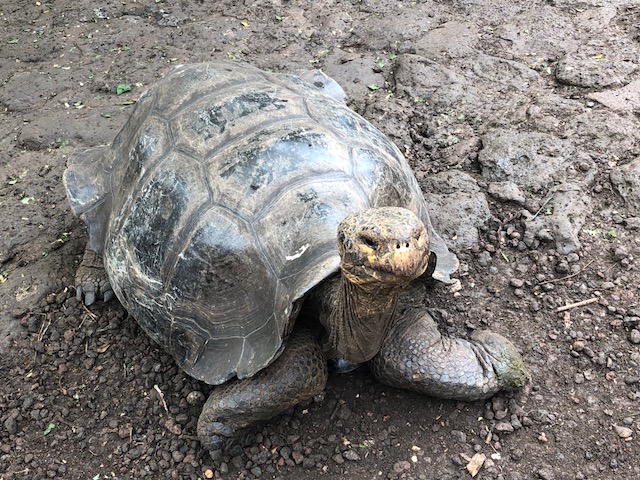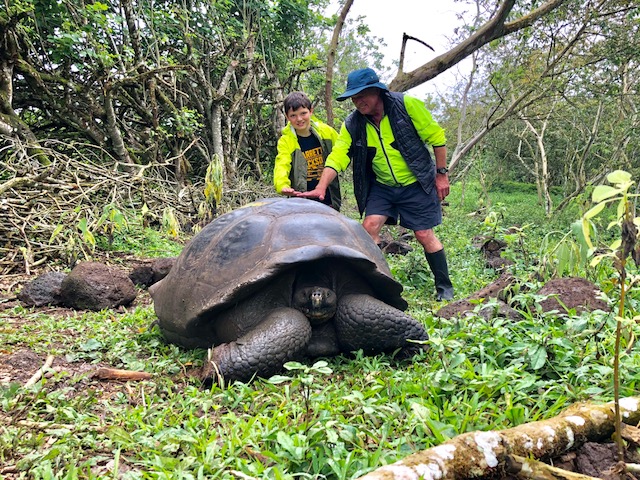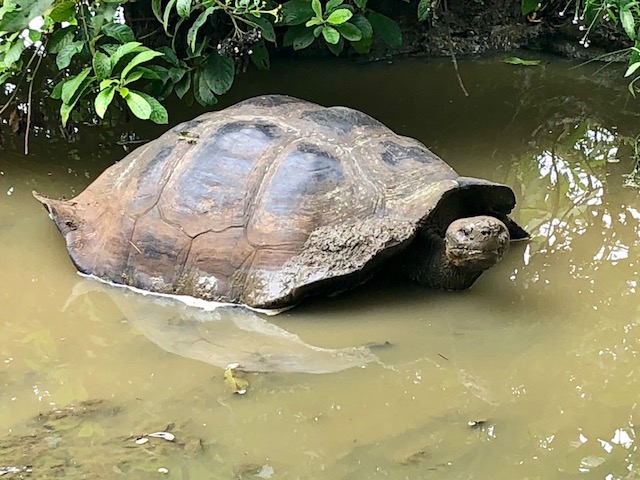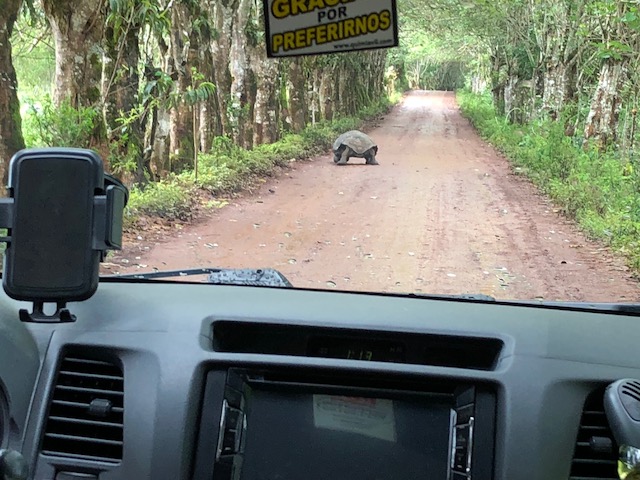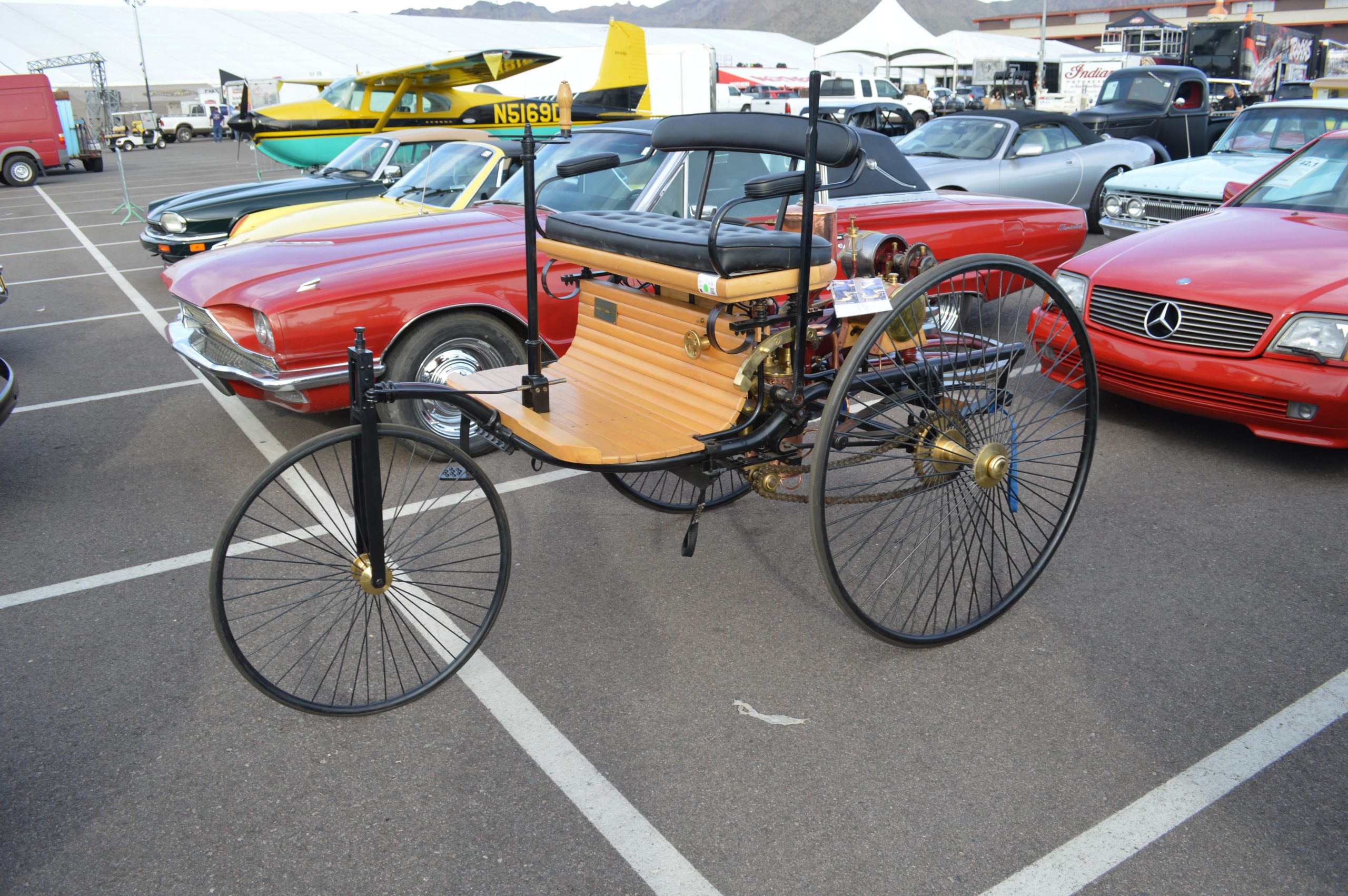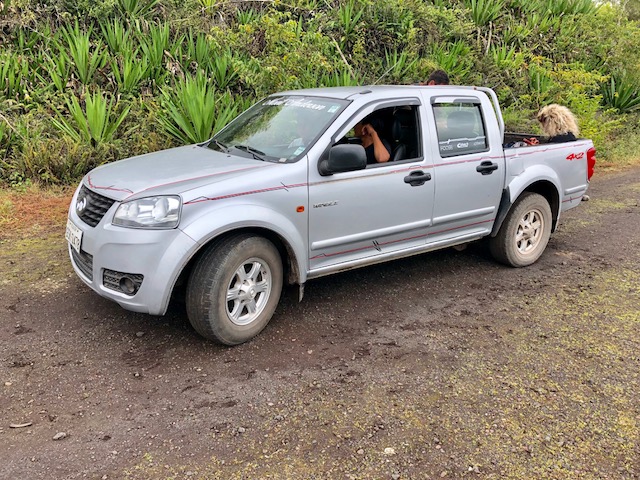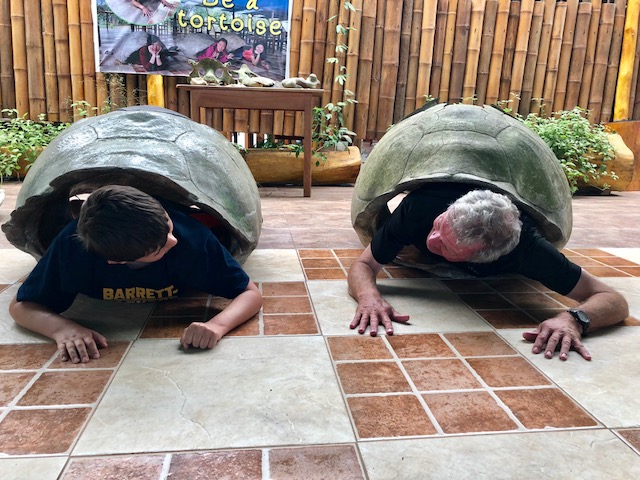
Bradley and I visited a conservation and breeding facility for Galapagos tortoises last week. Located on San Cristobal in the Galapagos Islands, its goal is to help keep these giant reptiles from extinction.
They were once thought to number over 200,000 on San Cristobal alone. Now, after centuries of being used as a convenient food source for passing ships (they can live up to two years in the hold of a ship with no food or water), their numbers have dwindled to fewer than 3,000.
The lifespan of the Galapagos tortoise is one of the longest of any animal on the planet — up to 150 years or more. One of our guides mentioned that it’s possible that one of the turtles we looked at might have been alive when Charles Darwin explored the Galapagos Islands in 1835, 183 years ago.
Galapagos Tortoises have existed essentially unchanged for hundreds of thousands of years. They have an efficient system of reproduction, have limited dietary needs and no real natural enemies — except man.
Think of the world events that have passed in the past 150 years. While one some of tortoises we saw were plodding across the island, America fought the Civil War, both World Wars, the Korean and Vietnam wars and is still engaged in the middle east. All while our tortoises were munching on grass.
The earth population has increased more than four-fold, from just 1.2 billion in 1850 to 7.6 billion today.
The first automobile, the Benz Patent-Motorwagen, was built 133 years ago in 1885. All the automobiles we know today share this common ancestor.
During the past 133 years, the automobile has evolved from a primitive machine that required constant attention and mastery. Today they are almost space capsules requiring increasingly smaller inputs from a driver.
It’s difficult for us to conceive of geologic time. After all, we measure things in decades and generations.
For those of us who have spent our lives immersed in cars, we have watched them move through what I refer to as The Golden Age of Motoring, which lasted from 1955-73. This was a time when analog cars reached their zenith, with their performance envelope neatly matching the driving capabilities of most enthusiast operators.
For those of us in our own golden years, we will see the advent of automobiles that require no operator inputs whatsoever, aside from selecting a destination.
In fact, the entire era of the “driven” automobile is just a blip in geologic time.
In less than the lifespan of a single giant tortoise, we’ve seen this machine become ubiquitous, as a symbol of personal mobility, and at the same time a vehicle of commerce.
If our senior-citizen tortoise had happened to plant himself near one of the roads that surround the preserve, he would have seen cars evolve from Model Ts to the ubiquitous and extremely practical four-door half-pickup utes that make up most of the car population on the Galapagos.
We can’t change the past or the future. Just as we left rod-operated brakes and (soon) manual transmissions behind, we can’t stop the trend towards autonomous cars any more than we can prevent humans of all ages to stop spending so much time looking at their cell phones.
This week in the Galapagos has been a step back in time, as well as a step INTO time. I watched the waves of the Pacific Ocean crash against the beach in front of our hotel in Puerto Villamil, on the island of Isabela. These waves have been pounding this shore for hundreds of thousands of years. Only in the past few hundred years have their been sailing ships and explorers riding them.
I’m ready to go back to Oregon and my modest collection of analog cars. I look forward to practicing my archaic skills of double clutching and trail braking.
We are all a part of an on-going process of evolution. Some things just change faster than others.
